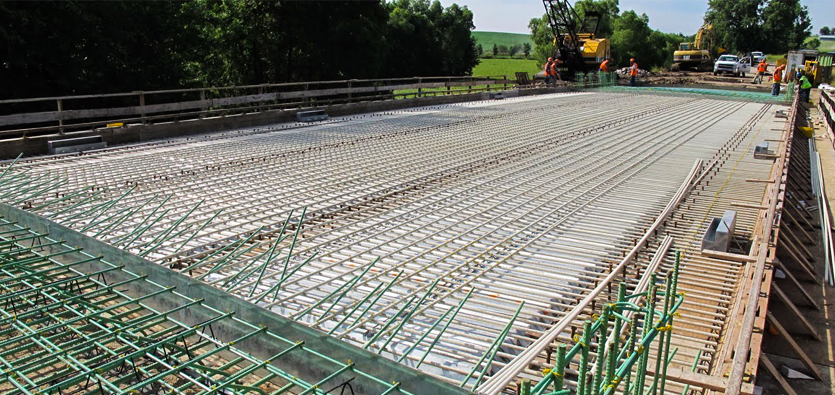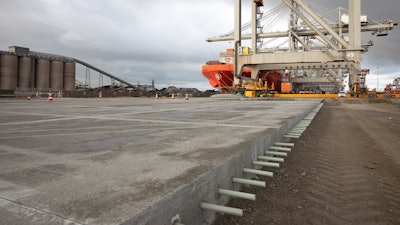Discovering the Advantages of Composites in Building and construction
Discovering the Advantages of Composites in Building and construction
Blog Article
Unlocking the Environmental Advantages of Recycled Compounds in Building and Design
In the world of construction and design, the usage of recycled composites holds considerable assurance for enhancing sustainability techniques and reducing environmental influence. The shift in the direction of a more sustainable future in these sectors hinges on opening the full potential of recycled composites.

Ecological Impact Reduction
The reduction of environmental influence through the use of recycled compounds in building and construction and layout plays an important function in sustainable techniques. By including recycled compounds right into structure materials, the building sector can significantly reduce its carbon impact and contribute to a more environmentally friendly future. These lasting products, made from repurposed plastics, wood fibers, or other recycled elements, supply a viable choice to typical building materials without endangering on high quality or toughness.
Recycled composites aid draw away waste from land fills and decrease the requirement for removing resources, therefore saving natural deposits. Furthermore, the manufacturing process of these compounds often eats much less power and releases less greenhouse gases contrasted to creating virgin materials (composites). This shift in the direction of making use of recycled composites not just minimizes environmental injury but likewise advertises a circular economic climate by urging the reuse of materials that would or else be discarded
Waste Minimization
With an emphasis on minimizing waste in building and layout, the assimilation of recycled composites provides a lasting solution to decrease environmental effect. Waste reduction is a crucial element of sustainable techniques, and using recycled composites presents a chance to accomplish this objective properly. By making use of materials that have already served their preliminary function, such as recycled plastics or redeemed timber fibers, the construction and design industries can substantially minimize the quantity of waste created and sent out to landfills.
Recycled composites have the potential to divert considerable amounts of waste from conventional disposal techniques, adding to a much more circular economy where resources are utilized effectively. Furthermore, the production procedure of recycled compounds often consumes less power and generates less exhausts contrasted to virgin products, better decreasing the environmental impact of construction and style jobs.
Carrying out waste minimization techniques with the incorporation of recycled composites not only helps in preserving natural deposits however additionally advertises a more lasting strategy to structure and creating for a greener future.
Energy Conservation
Integrating recycled compounds not just minimizes waste in construction and design but also plays a crucial role in enhancing power preservation methods within the industry. The usage of recycled compounds in building can substantially contribute to power conservation through numerous methods. First of all, the production of virgin products typically needs considerable energy inputs, whereas making use of recycled compounds consumes much less power, therefore decreasing overall power consumption. Furthermore, including recycled composites can add to better insulation residential or commercial properties in structures, reducing the need for too much heating or cooling, and subsequently lowering energy usage for environment control. Furthermore, the lightweight nature of lots of recycled compounds can lead to lighter structures, needing much less power for transportation and installation. By promoting the use of recycled composites in building and construction and layout, the industry can make considerable strides in the direction of attaining power efficiency and minimizing its carbon impact, ultimately adding to an extra lasting built atmosphere.
Carbon Footprint Decrease
Enhancing sustainability practices via the utilization of recycled compounds in building and construction and layout substantially reduces the carbon footprint of the sector. By including recycled materials into the manufacturing of composites, the demand for virgin sources reduces, resulting in reduced power consumption and greenhouse gas exhausts connected with standard manufacturing procedures. This decrease in carbon footprint is critical in combating environment change and advertising a much more eco-friendly method to construction and style.
Additionally, making use of recycled composites also assists in diverting waste from land fills, consequently reducing the ecological effect of disposal and advertising a round economy. The carbon footprint reduction achieved via the adoption of recycled compounds lines up with the global press towards lasting methods and the decrease of commercial emissions. It showcases a dedication to responsible resource monitoring and a shift in the direction of greener alternatives in the construction and layout sectors. Eventually, by focusing on the integration of recycled composites, the sector can make significant strides in reducing its carbon impact and adding to a more sustainable future.
Lasting Future
The combination of recycled compounds in construction and my website layout not just addresses instant ecological worries however additionally lays a solid structure for a lasting future in the market. By incorporating recycled composites right into building products and products, the building and design markets can considerably lower their reliance on virgin sources, resulting in an extra round economic climate. This change towards sustainability is critical for reducing the ecological impact of standard construction techniques, pop over here which frequently cause high levels of waste generation and source depletion.

Final Thought
Finally, recycled composites supply significant ecological benefits in building and layout by decreasing ecological effect, minimizing waste, saving energy, lowering carbon impact, and advertising a lasting future. Accepting making use of recycled composites can add to a much more environmentally-friendly method to building and design, eventually leading to a more lasting and greener future for all.
The decrease of environmental influence via the usage of recycled compounds in building and design plays an important role in lasting methods.With a focus on decreasing waste in building and style, the assimilation of recycled composites provides a sustainable solution to lower environmental influence. By promoting the usage of recycled composites in construction and design, the industry can make substantial strides in the direction of attaining power effectiveness and decreasing its carbon footprint, eventually adding to a more lasting developed setting.

Report this page